When it comes to bringing classic stories of the fantastic to life there is none better than legendary stop-motion animator Ray Harryhausen and after tackling Jules Verne’s Mysterious Island in1961it only stood to reason that he’d eventually get around to science fiction's other grandfather, that of author H.G. Wells, so three years later the world was treated to a wonderful adaptation of the classic Wells story The First Men in the Moon.
When it comes to adapting the works of either Jules Verne or H.G. Wells Hollywood has always played fairly fast and loose with the material and thus many films based on these literary greats could best be described as “In Name Only” adaptations, which brings us to producer Charles H. Schneer and special effects wizard Ray Harryhausen whose production of First Men in the Moon which share plot and character elements from the original story it diverges from the source material to a rather large extent, maybe not enough to qualify it as an “In Name Only” but it’s certainly not what H.G. Wells had envisioned. Now, many changes can certainly be attributed to the fact that the movie was made in the mid-1960s while the book was published back in 1901, what with humanities knowledge of the Moon and space travel having changed a little since the Victorian era, not that this movie had any real grasp of science or lunar geography in any way shape or form, even by 1960s standards.
At least neither the book nor the movie claimed the Moon was made of cheese.
The film begins with a nice little prologue of sorts, which bookends the movie, that takes place in the present and where we find that a United Nations team of astronauts has landed on the lunar surface but instead of being able to claim the right of being the “First men on the Moon” they soon discover an old British flag and a note to Queen Victoria, needless to say, this causes quite the stir and soon people are running about trying to figure out who exactly placed those objects there and what’s it all mean. The note, which claims the Moon for Queen Victoria, mentioned a Katherine Callender, and this allows UN authorities to track down her husband, she had passed away ten years ago, and from here on the film moves into flashback mode as this man outlays the fantastic story of his trip to the Moon.
“For the last time, no, the Moon has no Cat-Women.”
Our narrator is failed playwright Arnold Bedford (Edward Judd), who had holed himself away in a beautiful country cottage to hopefully overcome a serious issue of writer’s block, but his literary retreat was interrupted by his lovely fiancée Kate Callender (Martha Hyer), who is concerned with her lover’s financial affairs, which could interfere where her marriage plans. There is light at the end of the tunnel and it comes in the form of an eccentric inventor named Professor Cavor (Lionel Jeffries) who has invented an anti-gravity element he calls Cavorite, a substance that will let anything it is applied to nullify the force of gravity, and with it, he plans to travel to the Moon. To say that Miss Callender is less than thrilled about this prospective journey would be a vast understatement, with her threatening to break off the engagement on several occasions, but through typical goofy mishaps, the kind that these stories rely on, she finds herself an accidental passenger on this miraculous voyage. It should be noted that the character of Kate Callender does not appear in the H.G. Wells novel and is another case of Hollywood inserting a “pretty face” despite the story not warranting such.
She serves about as much purpose as that chicken.
When our trio eventually make their way to the Moon, after too long of a wait for us the viewer, we quickly learn that an insectoid population, who Cavor dubs Selenites, is living beneath the surface in massive catacombs and it’s here that we finally get the Ray Harryhausen goodness that we’ve been waiting for. Cavor and Bedford spend much of the remaining time running away from these diminutive insect people, with a nice encounter with a giant man-eating caterpillar to liven up the proceedings, and this is also where we get some rather interesting conflict with Bedford’s “Punch first ask questions later” policy and Cavor’s attempts to open a peaceful dialogue with the Selenites. Unfortunately, Cavor spends a little too much time explaining mankind’s proclivity for violence and our tendency to declare war on each other and this has a less than positive effect on Selenites and their Grand Lunar, who decides that our heroes can never be allowed to return to Earth. The film concludes with Bedford and Kate escaping the Moon, with Cavor deciding to stay behind to hopefully mend some political fences, but that clearly didn’t go too well for when UN astronauts break into the Selenite's underground city, they find it deserted and decaying, and Bedford realizes that the Selenites must have succumbed to Cavor's common cold virus to which they had no immunity.
“Have any of you Selenites heard of War of the Worlds?”
Stray Observations:
• Going by this film and At the Earth’s Core, we must conclude that Victorian gentlemen were constantly building fabulous machines of exploration.
• The opening sequence showing us an international team of astronauts going to the Moon was a far cry from the actual “Space Race” that was going on between Russia and the United States at the time.
• The United Nations astronauts discover a Union Jack flag and a note to Queen Victoria but due to radiation from the sun, these articles would have long since been bleached out of all the colours.
• The sphere travels at a speed of roughly 500 mph which would make their trip to the Moon take several weeks and I didn’t even see a toilet in that thing.
• In the original story, Wells depicted the Moon as having an atmosphere, thus the protagonists didn’t need spacesuits to survive their exploration, but in this movie, our characters use deep-sea diving suits to allow them to breathe on the Moon, yet these suites don’t have gloves and thus the unfiltered ultraviolet solar radiation would have burned their bare skin instantly.
• The Selenites use an X-ray machine to examine Miss Callender and thus we are treated to another classic Ray Harryhausen skeleton.
Selenite Homeland Security seen here hard at work.
The Ray Harryhausen special effects sequences on the Moon are the obvious highlights of this film, and are the main reason for watching First Men in the Moon, and while these moments will not disappoint fans of Harryhausen’s amazing technique the film itself did disappoint at the box office, which Harryhausen attributes to the inclusion of too much comedy but producer partner Schneer insisted it be included to offset the fact that film being another period piece, which was never a favourite element of Schneer’s. Much of the film's comedy is provided by Lionel Jeffries as the film’s combination mad scientist and absent-minded professor, a role that Jeffries would sort of revisit in Chitty Chitty Bang Bang a few years later, Edward Judd makes for your standard stalwart hero, much in the vein of Rod Taylor from The Time Machine, as for the role of Miss Callender actress Martha Hyer, she is quite serviceable in this rather thankless part and she is actually quite fun when bantering with Lionel Jeffries, of course, the true star is the Moon creatures and as mentioned they do not disappoint.
If only Neil Armstrong had such a fun encounter.
With First Men in the Moon Ray Harryhausen and Charles H. Schneer provide audiences with a rather enjoyable, if frivolous, journey to our nearest celestial neighbour, and though this entry is often overshadowed by such collaborations as Jason and the Argonauts or The Seventh Voyage of Sinbad this is still a fun film for audiences of all ages and is well worth checking out.
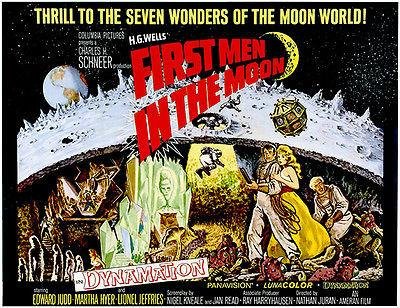
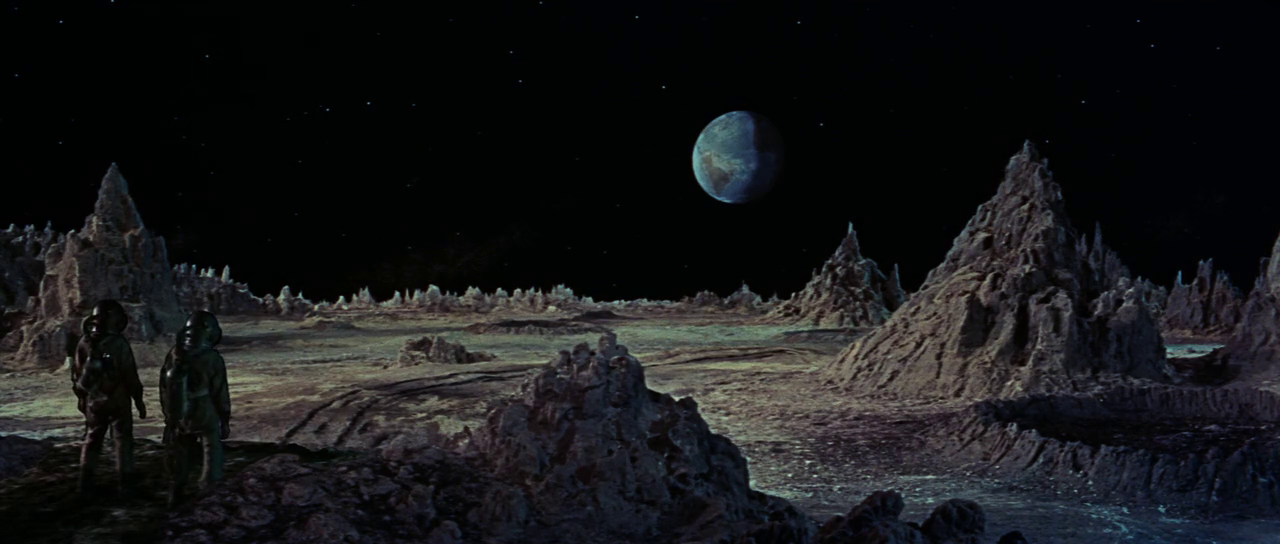
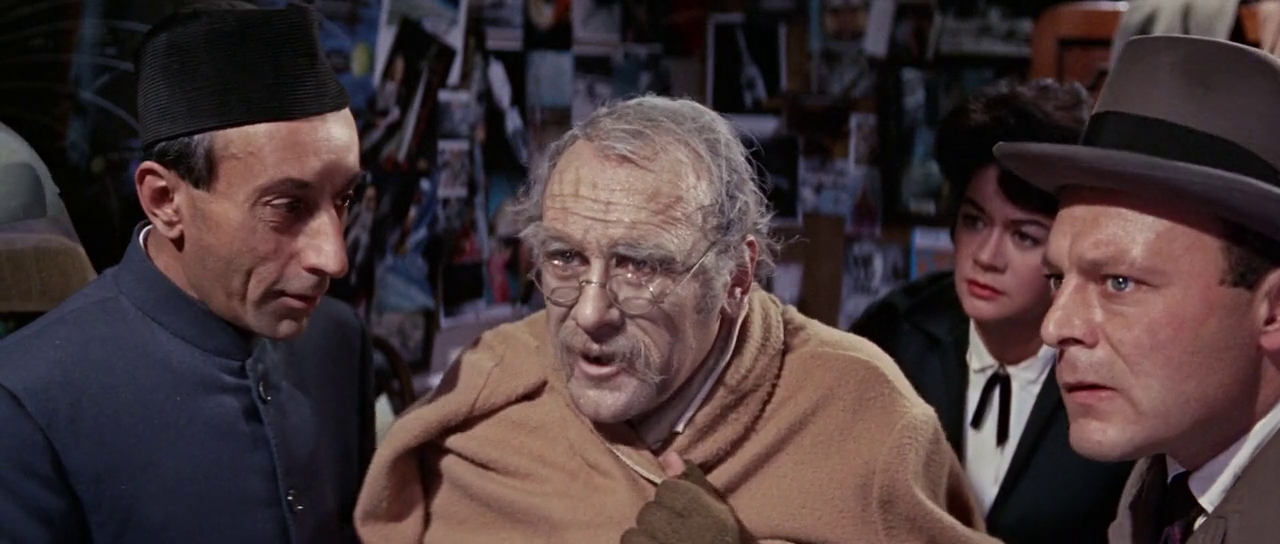

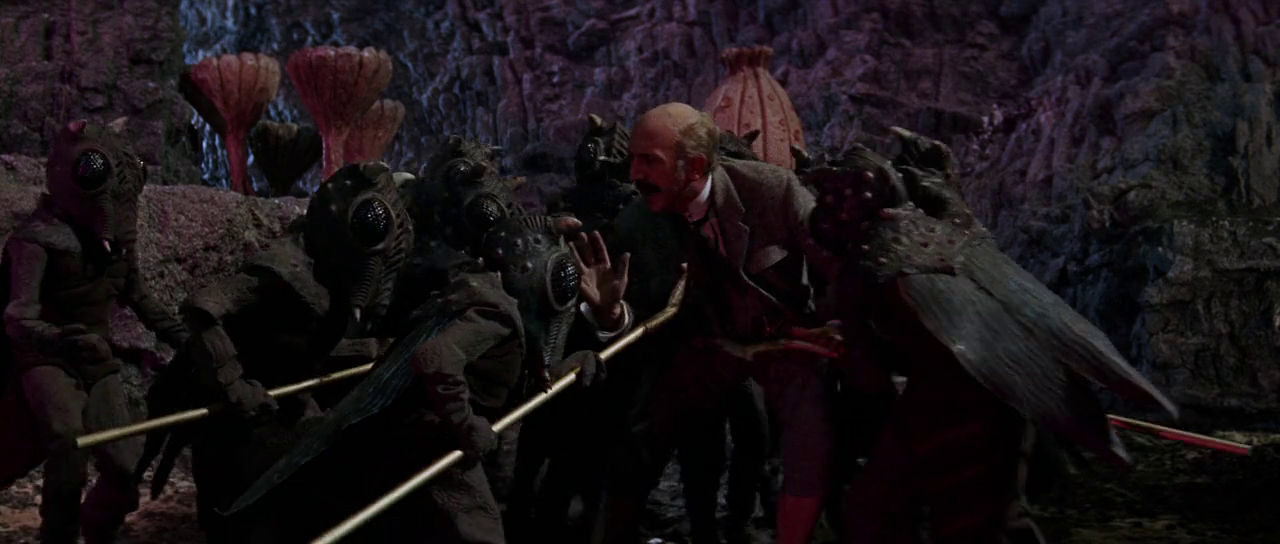

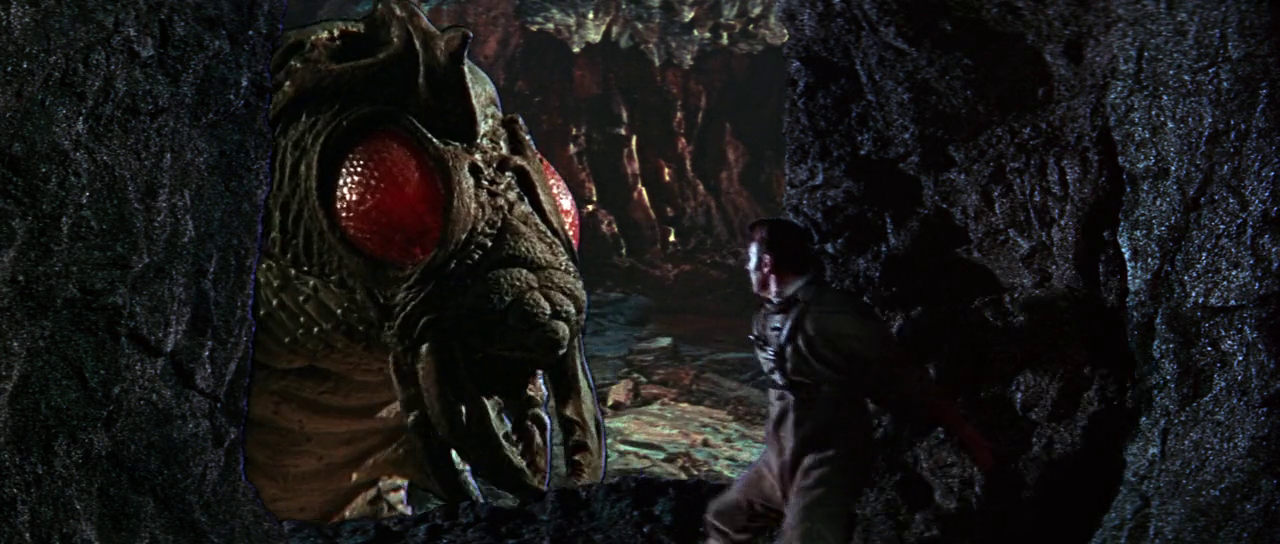

No comments:
Post a Comment